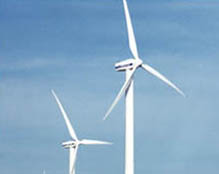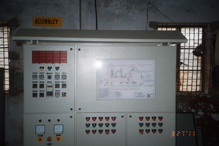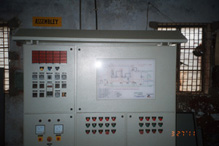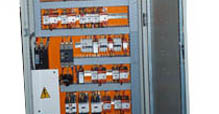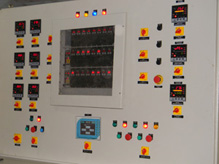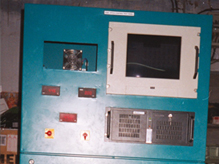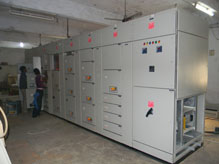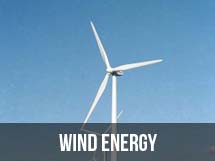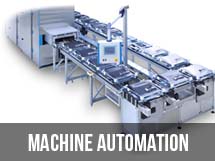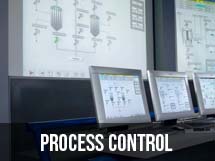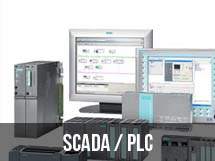Products - OEM Control Panel
As a OEM Control Panel Manufacturer We design & build electrical control panels for customers who build OEM machines. Our Versatile Expertise in industries like Wind Energy / Wind Turbine, Compressor, Flare Systems, Incinerators, Evaporators, Filtration systems, Boilers, Chillers, Spray Driers, Krom Schroder, Test / Simulation, Transformers, HVAC Panel.
Wind Energy / Wind Turbine Panel | Compressor Control Panel | Flare Systems | Incinerators | Evaporators |
Filtration systems | Boilers | Chillers | Spray Driers | Krom Schroder | Test / Simulation | Transfomers | HVAC Panel
Filtration systems | Boilers | Chillers | Spray Driers | Krom Schroder | Test / Simulation | Transfomers | HVAC Panel
Wind Energy / Wind Turbine panel
Being a renewable energy source in India There is lot of potential in this business. Power supply & Demand gaps provide more thrust in this business. Control Systems Engineers had Started the business in this sector from 1998 & all these Years developed the Control Panels / power Panels / pitch Panels / capacitor Panels& battery boxes. In conclusion in LT side of wind energy all the components for controls are developed, Produced in mass & running successfully at various site Conditions in India. Control Systems Engineers has supplied Panels for 350kw / 1 MW / 1.25 MW / 1.5 MW and battery boxes wind turbine generators. Panels manufactured for The hub are pitch Panel and battery boxes requires more precision as Panels are rotated 360 degree every day.
Read More
Read More
Compressor panel
Being a utility customer wants uninterrupted source of air/gas for the in-house use. Compressor Control Panels is manufactured with simplest from annunciator Panels To most complex like touch screen controls via PLC / MMI's. Panels provided for hazardous are requirement in gas group IIA / IIB & IIC. Pressurized Panels are made as per NFPA 496 standard ( type Z Purge ). Control Systems Engineers had developed complicated logics for the multiple compressor installation for the sequencing and for the common controls.
Read More
Read More
Flare Systems
Hazardous gases can not be disposed of in atmosphere . hence Flare system is required.
Panels for the flare is available in IIA/IIB or IIC Area.
Manual pilot ignition panels are used for small applciaitons. Here pilot on/off status is provided and ignition is done manually.
Read More
Panels for the flare is available in IIA/IIB or IIC Area.
Manual pilot ignition panels are used for small applciaitons. Here pilot on/off status is provided and ignition is done manually.
Read More
Incinerators
Waste disposal is becoming threatening problem to the Natural Environment. To protect the environment from the hazardous waste, efficient and reliable incinerating system is the only feasible solution.
Read More
Read More
Evaporators
Evaporation is a process, which involves thermally removing the liquid from a solution, suspension or emulsion. The starting and end products are in the liquid phase and the end Product is obtained in the concentrated form. Evaporator control involves the speed control of conveyor, various interlocks for the drives and monitoring of the evaparator parameters.
Read More
Read More
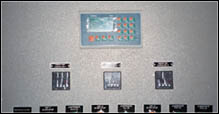
Filtration systems
In the pharmaceutical industry the filtration is a phenomenon by which solid particles are removed from the liquid by means of process. Level monitoring and controls are provided in the processes. Speed of the motor is adjustable via variable speed drive to change the rate of the filtration. Various tripping interlocks are provided in the Panel for tripping and/or controlling the filtration process. Since pharma industry is a highly corrosive environment SS Panels are provided.
Read More
Read More
Boilers
I. INTRODUCTION
Over the years the demand for high quality, greater efficiency and automated machines has increased in the industrial sector of power plants. Power plants require continuous monitoring and inspection at frequent intervals. There are possibilities of errors at measuring and various stages involved with human workers and also the lack of few features of microcontrollers. Thus this paper takes a sincere attempt to explain the advantages the companies will face by implementing automation into them.
Read More
Over the years the demand for high quality, greater efficiency and automated machines has increased in the industrial sector of power plants. Power plants require continuous monitoring and inspection at frequent intervals. There are possibilities of errors at measuring and various stages involved with human workers and also the lack of few features of microcontrollers. Thus this paper takes a sincere attempt to explain the advantages the companies will face by implementing automation into them.
Read More
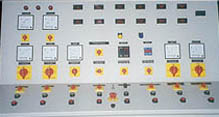
Chillers
The chiller components to be adjusted during the chiller start-up, load-flow, and shutdown procedures are
Listed ; they have the following features:
Read More
- The chilled-water pump (CHWP) is a constant speed pump. It starts or stops immediately once it received an on or off command. The CHWP is usually the first component to start in the chiller and the last component to stop.
- Similar to the CHWP, the cooling-water pump (CWP) is a constant speed pump. It starts or stops immediately once it has received an on or off command. It operates only when the CHWP is running.
Read More
Spray Driers
Spray drying is the transformation of feed from a fluid state into a dried particulate form by spraying feed into a hot drying medium.
Spray drying system consists of four process stages.
A) Atomization of feed into a spray.
B) Spray - Air contact
C) Drying of spray
D) Separation of dried product from the air.
Read More
Spray drying system consists of four process stages.
A) Atomization of feed into a spray.
B) Spray - Air contact
C) Drying of spray
D) Separation of dried product from the air.
Read More
KROM SCHRODER
Heat treatment processes in the ceramics industry • Edition 09.09 Heat treatment processes in the ceramics industry • Edition 09.09
Staged control(Impulse control)
The industrial kiln systems built for heavy clay production are mostly equipped with impulse control. With this type of control, the output impulse from the burner is strong enough to produce a uniform distribution of temperature in the kiln atmosphere and a good level of circulation. A pneumatic air/gas ratio control system offers maximum safety thanks to air deficiency cut-out. A constant lambda value is maintained despite changing air pressures. Staged control without a pneumatic ratio control system offers the additional option of central lambda adjustment.
Read More
Staged control(Impulse control)
The industrial kiln systems built for heavy clay production are mostly equipped with impulse control. With this type of control, the output impulse from the burner is strong enough to produce a uniform distribution of temperature in the kiln atmosphere and a good level of circulation. A pneumatic air/gas ratio control system offers maximum safety thanks to air deficiency cut-out. A constant lambda value is maintained despite changing air pressures. Staged control without a pneumatic ratio control system offers the additional option of central lambda adjustment.
Read More
Test / Simulation
Control systems has designed and supplied panels for the following:-
1. PLC Analogue input, Output, Digital Input, Digital output testing.
2. Voltage simulation panel for control panel testing.
3. Computer control test panel with industrial monitor for Hub testing.
4. PLC Based panels for testing the wind turbine panels
Same are used by OEM Users/Panel mfg. for the testing purposes.
Read More
1. PLC Analogue input, Output, Digital Input, Digital output testing.
2. Voltage simulation panel for control panel testing.
3. Computer control test panel with industrial monitor for Hub testing.
4. PLC Based panels for testing the wind turbine panels
Same are used by OEM Users/Panel mfg. for the testing purposes.
Read More
transfomers
Control systems has designed and supplied panels for the following:-
The costliest equipment in a substation is transformer. Therefore, the protection of transformers in the substation requires most attention.
There are different relays functioning based on electrical and mechanical parameters for the protection of transformer. All these relays operate to open Circuit Breakers on either side of the transformer.
Normally, power flow through the transformers inteneded for distribution of power is from HV side to LV side as sources are situated at HV side for . In the case of power transformers in large Control systems engineers has provided Marshalling Panel, cooler control panels and RTCC for the transformers and panels are exported to Urugae.
Read More
The costliest equipment in a substation is transformer. Therefore, the protection of transformers in the substation requires most attention.
There are different relays functioning based on electrical and mechanical parameters for the protection of transformer. All these relays operate to open Circuit Breakers on either side of the transformer.
Normally, power flow through the transformers inteneded for distribution of power is from HV side to LV side as sources are situated at HV side for . In the case of power transformers in large Control systems engineers has provided Marshalling Panel, cooler control panels and RTCC for the transformers and panels are exported to Urugae.
Read More
HVAC Panel
Control Strategies
The simplest control in HVAC system is cycling or on/off control to meet part load conditions. If building only needs half the energy that the system is designed to deliver, the system runs for about ten minutes, turns off for ten minutes, and then cycles on again. As the building load increases, the system runs longer and its off period is shorter.
One problem faced by this type of control is short-cycling which keeps the system operating at the inefficient condition and wears the component quickly. A furnace or air-conditioner takes several minutes before reaching "steady-state" performance. "Well," you say, "why not just lengthen the time between starts to avoid short-cycling?" This is possible but at a cost of some discomfort for short time. The longer the time between cycles, the wider the temperature swings in the space.
Read More
The simplest control in HVAC system is cycling or on/off control to meet part load conditions. If building only needs half the energy that the system is designed to deliver, the system runs for about ten minutes, turns off for ten minutes, and then cycles on again. As the building load increases, the system runs longer and its off period is shorter.
One problem faced by this type of control is short-cycling which keeps the system operating at the inefficient condition and wears the component quickly. A furnace or air-conditioner takes several minutes before reaching "steady-state" performance. "Well," you say, "why not just lengthen the time between starts to avoid short-cycling?" This is possible but at a cost of some discomfort for short time. The longer the time between cycles, the wider the temperature swings in the space.
Read More





